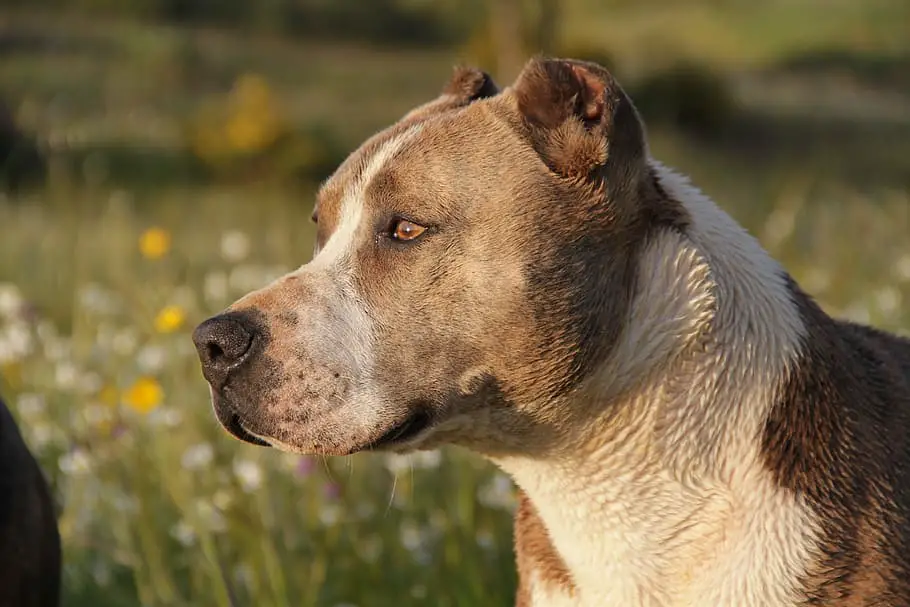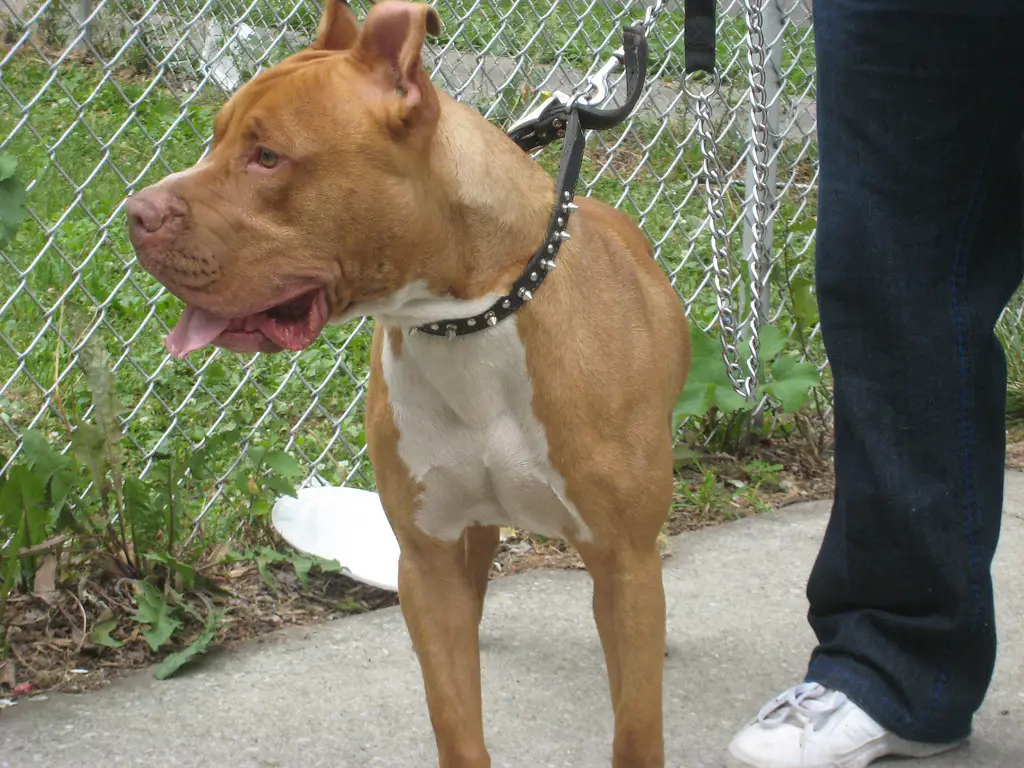Are Pitbulls easy to train? That’s a question that has been asked about dogs for years, and with the rising popularity of this breed in recent years, it is still a widely discussed topic.
While the stereotype associated with Pitbulls often labels them as especially unruly or hard to control, they are actually just like any other dog in terms of their capacity to learn and take commands. Pitbulls can be quite easy to train if their training is started at an early age.
If you want to find out more about how Pitbulls can be trained and how best to go about it, read on! In this article, we will discuss everything you need to know about training a Pitbull.
Are Pitbulls Easy to Train?

Pitbulls are one of the most misunderstood dog breeds, often known for their muscular build and strong-willed personalities. However, when it comes to training, pitbulls are eager to please their owners and learn new things. With the right approach and consistency, pitbulls are relatively easy to train.
One reason why pitbulls are easy to train is that they are highly motivated by rewards and praise. This means using positive reinforcement methods such as treats, toys, and verbal affirmations can be highly effective. Moreover, pitbulls are intelligent and can quickly pick up on commands and routines.
Another factor that makes pitbulls easy to train is their loyalty and devotion to their owners. Pitbulls thrive on attention and affection and will do anything to please their owners. If you establish a strong bond with your pitbull, training can be a fun and enjoyable experience for both of you.
Finally, it is worth noting that early socialization and exposure to different environments and situations are crucial in training a pitbull. This helps them develop confidence and adaptability, making them more receptive to new experiences and commands.
7 Ways To Train an Aggressive Pit Bull
Pitbulls have often been associated with aggression and are sometimes banned in certain communities due to safety concerns. However, with proper training and socialization, pitbulls can become well-behaved and loving pets.
Here are seven ways to train an aggressive pitbull:
- Early Socialization
Early socialization is crucial for pitbulls, especially those with aggressive tendencies. Exposing your pitbull to different people, animals, and environments at a young age can help them develop positive associations and reduce the risk of developing fearful or aggressive behavior. Socialization can also help your pitbull become more adaptable, confident, and well-behaved.
- Use Positive Reinforcement
Positive reinforcement methods such as treats, toys, and praise are highly effective in training pitbulls. Punishment and aggression only reinforce negative behaviors, whereas positive reinforcement encourages good behavior and builds trust between you and your pitbull. For example, when your pitbull displays good behavior, such as sitting or lying down on command, reward them with treats or praise.
- Teach Your Pitbull to Behave Properly Around Other Dogs
If your pitbull tends to be aggressive toward other dogs, it is crucial to address this behavior early on. Consider enrolling your pitbull in obedience training classes to help them learn how to interact with other dogs in a controlled and positive environment. Teach your pitbull basic commands such as “sit” and “stay” and reward them when they display good behavior around other dogs.
- Train Your Pitbull to Walk on a Leash
Walking your pitbull on a leash is important for their safety and helps them develop good behavior and obedience. Use positive reinforcement methods such as treats and praise to encourage your pitbull to walk calmly on a leash. Start by gradually introducing your pitbull to a leash, and reward them when they display good behavior, such as walking calmly by your side.
- Be Consistent
Consistency is key when it comes to training a pitbull. Establish clear rules and boundaries and stick to them consistently. This helps your pitbull understand what is expected of them and reduces confusion and anxiety. For example, if you don’t want your pitbull to jump on people, don’t allow them to jump on you either. Consistency also means being patient and not giving up too quickly, even when progress seems slow.
- Be Patient
Training a pitbull takes time and patience. It is important to remain calm and patient throughout the training process and not give up too quickly. If your pitbull displays aggressive behavior, it may take longer for them to learn good behavior than other dogs. With consistency and positive reinforcement, even the most aggressive pitbulls can learn good behavior and obedience.
- Seek Professional Help
If your pitbull displays extreme aggression or dangerous behavior, it is important to seek professional help. A qualified dog trainer or behaviorist can help you address your pitbull’s behavior and provide you with the necessary tools and techniques to train them effectively. Professional help may also be necessary if your pitbull has a history of aggressive behavior or if you have limited experience with dog training.
5 Common Mistakes To Avoid When Training a Pitbull

Training a pitbull can be challenging, especially if you are new to dog ownership. Here are five common mistakes to avoid when training an aggressive pitbull:
- Scolding Your Pitbull
Scolding or punishing your pitbull for negative behavior is not an effective training method. Negative reinforcement only reinforces negative behaviors and can make your pitbull fearful or aggressive. Instead, focus on rewarding positive behavior and redirecting negative behavior through positive reinforcement.
- Long and Exhaustive Training Sessions
Training sessions should be short and frequent rather than long and exhaustive. Pitbulls have short attention spans and can quickly become bored or frustrated if training sessions are too long. Keep training sessions short and focused, and consider breaking up training into multiple short sessions throughout the day.
- Being Inconsistent
Consistency is key when training a pitbull, and inconsistency can lead to confusion and anxiety in your dog. Set clear rules and boundaries, and stick to them consistently. Be patient, and don’t give up too quickly, even if progress seems slow.
- Using Forceful or Aggressive Training Methods
Using forceful or aggressive training methods, such as hitting or physically punishing your pitbull, is ineffective and can make your dog more aggressive and fearful. Instead, use positive reinforcement methods such as treats, praise, and toys to encourage good behavior and obedience.
- Neglecting Exercise and Playtime
Pitbulls are high-energy dogs and require plenty of exercise and playtime to stay healthy and happy. Neglecting exercise and playtime can lead to boredom and frustration, resulting in negative behavior and aggression. Make sure your pitbull gets plenty of exercise and playtime, both indoors and outdoors.
Benefits of Crate Training for Pitbulls
Crate training is an effective and humane way to train pitbulls and other breeds. Here are some benefits of crate training for pitbulls:
Provides a Safe and Comfortable Space
Crate training provides a safe and comfortable space for your pitbull to relax and rest. Dogs are naturally den animals, and a crate can provide a cozy and secure space that they can call their own. This can also help prevent destructive behavior when you’re not around.
Helps with Housebreaking
Crate training can also be an effective tool for housebreaking your pitbull. Dogs naturally avoid soiling their living space, and a crate can help reinforce this instinct. By keeping your pitbull in a crate for short periods, you can encourage them to hold their bladder and bowel movements until you take them outside.
Reduces Anxiety and Stress
Pitbulls and other breeds can experience anxiety and stress in new or unfamiliar environments. Crate training can provide a sense of security and reduce anxiety in these situations. A crate can also help prevent destructive behavior caused by stress or anxiety.
Conclusion
Pitbulls can be easy to train with the right approach and techniques. Early socialization, positive reinforcement, and consistent training can help your pitbull develop good behavior and obedience, even if they have aggressive tendencies.
Remember that training a pitbull takes time, patience, and consistency, and seeking professional help may be necessary in some cases. With proper training and care, pitbulls can make loving, loyal, and well-behaved pets.


